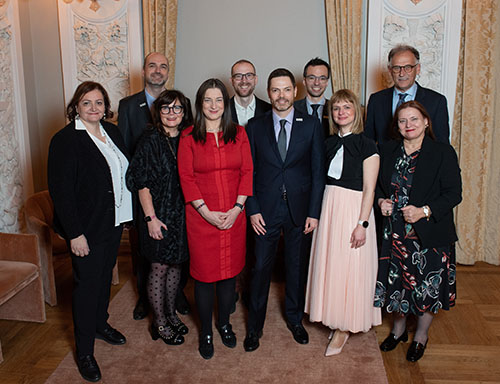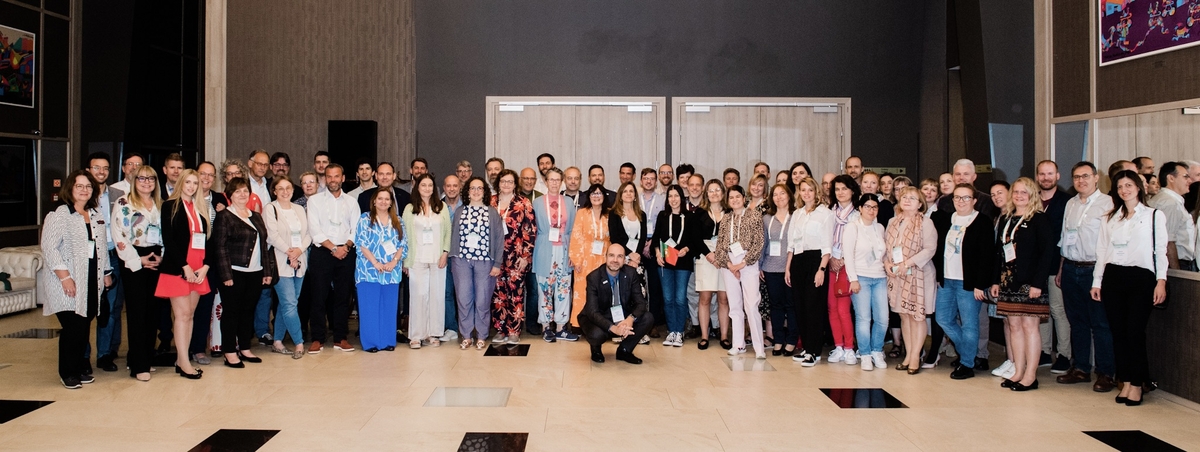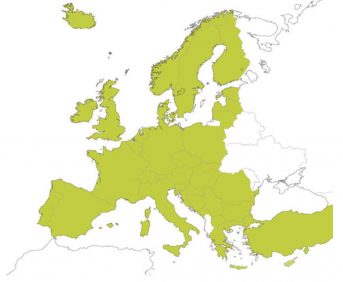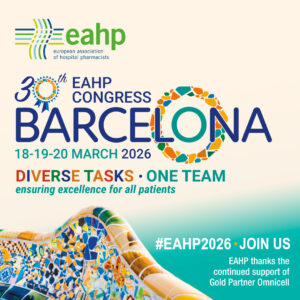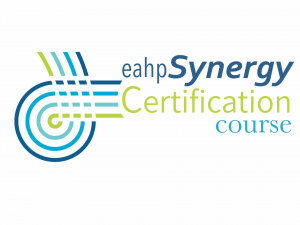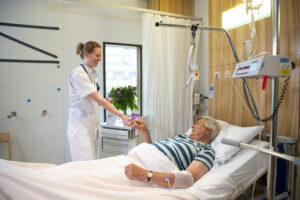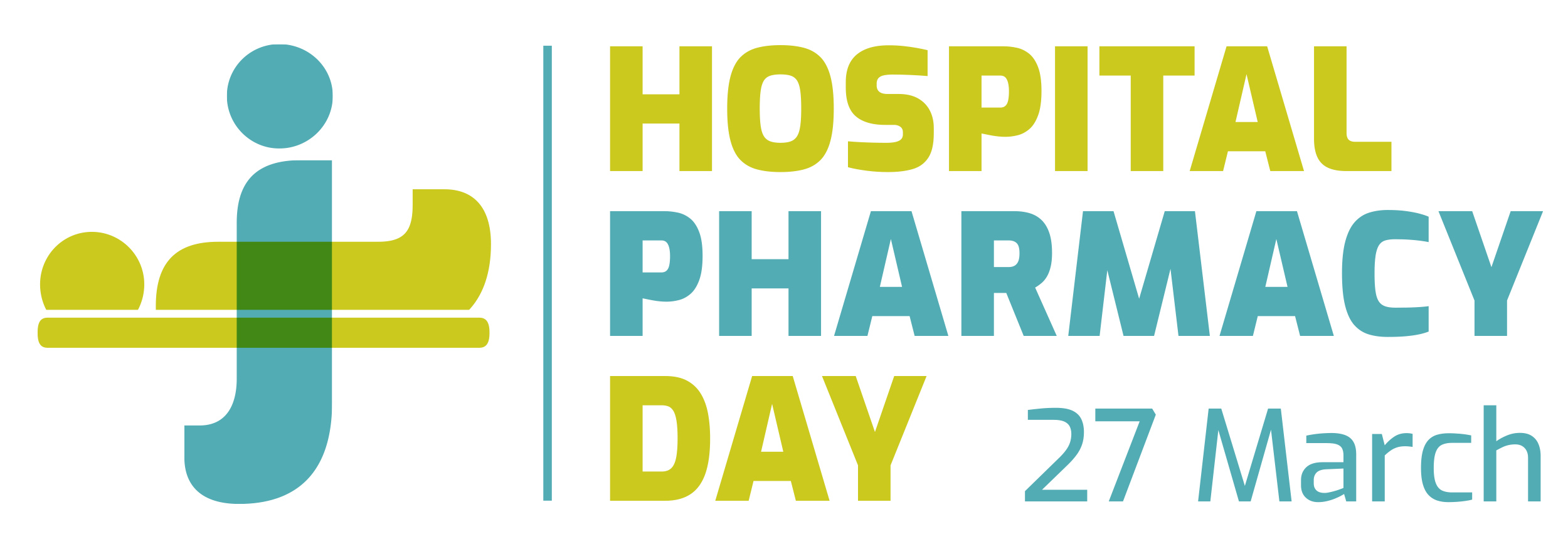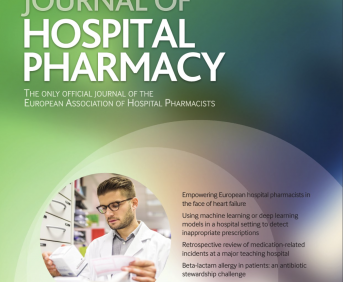IMPLEMENTING A NATIONAL PORTFOLIO OF EXTEMPORANEOUS PHARMACEUTICAL PREPARATIONS USED IN DANISH HOSPITALS
Pdf

European Statement
Introductory Statements and Governance
Author(s)
Janne Jensen, Solvej Wandy Pedersen, Susanne Nørregaard, Karin Herkell, Anne Thestrup Nielsen, Anita Gorm Pedersen
Why was it done?
A group of hospital pharmacists representing all hospital pharmacies in Denmark have in a previous study identified and slimmed a national portfolio of extemporaneous pharmaceutical preparations used by Danish hospitals from a total of 2,754 preparations down to approximately 750 preparations being considered of clinical importance. Without a common overview of the national portfolio there will be initiated production of duplicates and almost identical products resulting in a large and inconsistent portfolio.
The purpose of this GPI was to make the national portfolio of extemporaneous pharmaceutical preparations accessible to all hospital pharmacists in Denmark and to implement a common procedure to evaluate preparations before adding them to the national portfolio to avoid duplets and obsolete products.
What was done?
A common national procedure for adding new preparations to the national portfolio was developed and implemented to avoid duplets and to ensure a uniform quality and appropriate risk assessment of the preparations.
How was it done?
A national database was developed and tested. Each hospital pharmacy entered their own extemporaneous pharmaceutical preparations in the database. Also, the extemporaneous pharmaceutical preparations manufactured by community pharmacies and used in the hospitals were entered in the database.
One hospital pharmacist in each of the five regions in Denmark was appointed as gatekeeper for the national portfolio. A template for an application form for new preparations was developed. When a physician requests a new preparation the application form will be completed by the clinical pharmacist. It is forwarded to the gatekeeper who will evaluate the preparation before approving it as a candidate for the national portfolio.
What has been achieved?
430 extemporaneous pharmaceutical preparations from the hospital pharmacies are entered and quality approved in the database. 255 extemporaneous pharmaceutical preparations manufactured by community pharmacies were entered in the database.
A national group of five gatekeepers was formed, and the workflow for both the group and the individual gatekeeper was described and implemented at all Danish hospital pharmacies.
What next?
The GPI provides an easy-accessible overview of the national portfolio of extemporaneous pharmaceutical preparations, releasing production time and resources at the manufacturing pharmacies.
ANTIMICROBIAL STEWARDSHIP ALERTS SYSTEM
European Statement
Patient Safety and Quality Assurance
Author(s)
Emma Ramos Santana, Enrique Tevar Alfonso, Maria Jose Castillos Mendez, Maria Luz Padilla Salazar, Lucy Abella Vazquez, Jesus Ode Febles, Marcelino Hayek Peraza, Javier Merino Alonso
Why was it done?
The implementation of an antimicrobial stewardship program (AMS) is very important, but it has to be accompanied by personal resources. It is therefore necessary to effectively use the time spent in the AMS.
What was done?
We have worked with the Information Technology Service to develop an “Intelligent Antimicrobial Screening Program” (IASP).
How was it done?
Using the information available in Electronic Health Record (EHR) and in pharmacy and microbiology applications we have developed a computer tool that analyze hundreds of situations through pre-established conditions
What has been achieved?
Currently the system analyzes more than 40 conditions related to the correct use of antimicrobials based on antibiotic characteristics, patient situation and microbiological data.
Some of the most relevant conditions are:
●Antibiotic prescribed more than 6 days.
●Patient with parenteral antibiotic for more than 3 days and with other oral medicines.
●Antibiotic that must be adjusted in patients with renal impairment prescribed in patients with glomerular filtration rate (GFR)65 years old, GFR5 days prescribed or other nephrotoxic prescribed.
●Patients with linezolid and thrombocytopenia or anemia or without an hemogram in the last week.
●Patients with daptomicyn and high creatininkinase (CK) or without a recent determination.
What next?
This software allows to collect information contained in different systems and displays it in an organized view to the user. This makes it an easily system that can be exported to other hospitals.
Our next objective is to consult the microbiological information. Therefore the system will be able to recommend about the optimal antimicrobial treatment, detecting situations in which the treatment can be de-escalated or alerting in case of resistance.
PROTOCOL FOR MEDICATION RECONCILIATION AT DISCHARGE
European Statement
Patient Safety and Quality Assurance
Author(s)
Álvaro Caballero Romero, Enrique Galindo Sacristán, Fernando Malpica Chica , Enriqueta González González, Ana María Manzano Bonilla, Marcos Camacho Romera
Why was it done?
Medication errors (ME) are often identified in transitions of patients at admission to and discharge from the hospital. Medication reconciliation at discharge is an effective process to decrease the morbidity, mortality and healthcare expenses.
What was done?
A protocol for a medication reconcialiation project was designed by hospital and primary health care pharmacists.
How was it done?
The protocol has the following steps. To identify all the patients from the hospital at discharge daily. To select the polimedicated (5 or more prescribed medicament) and elderly (over 65 years old) patients. To review the discharge report in the clinical history patient in order to compare whether doctor prescriptions of medicaments (medicine, dose, posology, duration) correspond to the prescriptions included in the report at discharge. To identify discrepancies between both the discharge report and doctor prescriptions of medicaments. The discrepancies were clasified in justified and unjustified. The unjustified discrepancies were categorised as omissions, unnecesary addition, wrong medications, wrong drug frequency/dose, duplicities, pharmacological interacctions and inappropiated medicine regarding to the current clinical practice guidelines. The discrepancies are classified as high and low priority. Finally, both types of discrepancias are reported by sending emails to the specific physicians for each patient along the primary health care system. Some specific cases are discussed on phone calls by doctors and the pharmacists in order to achieve the best clinical goal for the patient.
What has been achieved?
The project was evaluated from June 2016 to May 2017. Total of discharges: 2788. Included patients: 863. Patients with discrepancies: 309 (35%). Detected discrepancies: 470. Rate discrepancies/patient: 1.52. Omissions: 122 of 470. (25.96%). Unnecesary addition: 60 of 470 (12.76%). Wrong medicine: 3 (0.63%). Wrong frequency/dose: 167 (35.53%). Duplicities: 92 (19.57%). Pharmacological interactions: 13 (2.65%). Inappropiated medicine: 13 (2.77%). Reported emails: 309/309 (100%).
What next?
Polimedicated and over 65 years old patients play an extremely important role in the current health care systems. The ME are frequent and may be particullary severe in this type of patients. To develope a protocol for medication reconciliation at discharge in order to identify potencial prescriptions problems is an oppotunity for the multidisciplinar care team to improve the patient care and decrease the expenses associated to primary health care.
INVOLVING PATIENTS IN A WORKSHOP FOCUSED ON COMMUNICATION SKILLS: A PROOF OF CONCEPT OF EXPERIENTIAL TRAINING FOR RESIDENTS IN HOSPITAL PHARMACY
Pdf

European Statement
Education and Research
Author(s)
Caroline Hache, Stéphane Honoré, Guillaume Hache
Why was it done?
The development of clinical pharmacy allows pharmacists to take patient-centered roles and responsibilities. However, patient-centered care requires a specific set of skills and training, such as patient-focused communication and conducting structured interviews. Thus, improvement of pharmacist-patient communication may lead to better clinical outcomes.
What was done?
We developed a workshop involving patients within the training programme of residents in hospital pharmacy. The workshop focused on communication skills needed to improve the quality and effectiveness of a pharmaceutical interview.
How was it done?
The workshop was developed jointly by two senior clinical pharmacists and a lecturer in education and communication science. The learning process integrated: working on participants’ perception of pharmacists-patient communication, didactic learning, training activities and evaluation. The assessment of the learning effect was performed by self-, peers-, and patient-scored charts. Patients’ feedback during the training activities and assessments was highlighted as the cornerstone of the learning process.
What has been achieved?
First, we built a competency chart on communication skills needed to perform a structured pharmaceutical interview. This tool has been validated by the patients and well accepted by the learners. It was used to assess the learning effect of the workshop, and may serve as a guide for the continuous development of junior practitioners. Secondly, the workshop has actually been implemented, with both the learners and patients expressing a high general acceptance and satisfaction. Finally, preliminary results show a learning effect assessed by both peers and patients.
What next?
The involvement of patients needs to be further expanded to the training programmes of undergraduate students, residents and clinical pharmacists. A future action planned is to develop a model with the French Society of Clinical Pharmacy (SFPC) for a national systematic training module: “Improving pharmaceutical interviews’ performance through effective communication”, involving patients.
IMPLEMENTATION OF GUIDELINES FOR THE ACTIVATION OF EFFECTIVE ANTIBIOTICS’ STEWARDSHIP TEAM IN GREEK HOSPITALS – THE ROLE OF HOSPITAL PHARMACIST
Pdf

European Statement
Clinical Pharmacy Services
Author(s)
Antonios Markogiannakis, Georgios Pegkas, Calliope Allagianni, Stavroula Efstathiou, Despoina Makridaki
Why was it done?
The term of AST has been introduced in Greek legislation since 2014 and should become the driving force to optimize antimicrobial therapy, especially for the protected antibiotics (PA): carbapenems, colistin and tigecycline. Unfortunately Greece ranks first in Europe in the consumption of the mentioned PA in hospitals, consequently the activation of AST constitutes national priority. The existing law frame defines that AST consists of four key member physicians (experienced in infectious diseases) plus the hospital pharmacist as coordinator of the group. As the number of serving pharmacists in Greece remains critically low, very few hospitals have actually activated the AST. The Panhellenic Association of Hospital Pharmacists (PEFNI) decided to organize regional meetings to enhance the involvement of pharmacists by sharing the practice of experienced colleagues running antibiotic stewardship programs (ASP) in their hospitals since fall of 2016.
What was done?
We have described the sequential steps for the establishment of multidisciplinary Antibiotic Stewardship Team (AST) in Greek hospitals and prepared training material to increase involvement of hospital pharmacists.
How was it done?
We combined the strategies and procedures implemented in the three hospitals during last year, in a flowchart presenting the establishment, activation and feedback of the AST. We have developed an ASP for hospitals, with initial target to minimize the use of PA:. Functional options in each step have been described, making it flexible for the colleagues to selectively implement them in their hospitals. We also created specific educational material to use in regional meetings that PEFNI organizes.
What has been achieved?
The application of ASP and the education of hospital pharmacists as coordinators results in: • Reliable reporting of controlled use for the PA • Safer antimicrobial management practice • Economy on restricted pharmacotherapy budgets • Acknowledgement of the critical role of pharmacists by other healthcare professionals, the hospital manager and the authorities
What next?
• The basic flowchart can be broadened to include subsequent stewardship activities such as recording proper surveillance of more classes of antibiotics, assessment of antimicrobial surgical chemoprophylaxis and/or antifungal pharmacotherapy.
• Connection of local ASP reports to a national network for all hospitals will help towards the creation of a real-time antibiotics’ consumption database in Greece.
IMPLEMENTATION OF THE FIRST MEDICINES INFORMATION SERVICE IN BELGIUM
Pdf

European Statement
Clinical Pharmacy Services
Author(s)
Elise Deyaert, Hilde Collier, Pieter-Jan Cortoos, Claudine Ligneel
Why was it done?
Medication errors are often caused by insufficient knowledge among healthcare professionals. Given limited clinical pharmacists’ presence on Belgian hospital wards, a pharmacy-led MIS can efficiently provide fast, accurate and objective medication-related information.
What was done?
We implemented the first Belgian Medicines Information Service (MIS) in our university hospital. In several countries, a MIS is common in most hospitals but until our project, no such MIS was available
in Belgian hospitals.
How was it done?
Best practices were researched through literature review and site visit at Charing Cross Hospital (London, UK). Secondly, in order to customize activities, all nurses and physicians were surveyed on medicines information needs. Our MIS was set up to centrally (1 dedicated pharmacist, phone number and e-mail address) receive medication-related questions from healthcare workers with the option to request additional clinical-pharmaceutical interventions (e.g. drug review). Implementation was accompanied by mailings, posters, business cards and presentations. All enquiries were registered in the MiDatabank® (UKMi National Medicines Information) and evaluated after 4 months, together with user satisfaction.
What has been achieved?
221 respondents (113 physicians, 103 nursing) to our survey found ‘drug administration/dosing’ (79.7%), interactions (69.6%) and ‘tablet crushing’ (49.7%) major problematic topics. Physicians rated the MIS to be useful for drug review, counselling and interactions while nursing preferred support on drug administration and tablet crushing. 96.8% intended to use the MIS.
Between 09/01 and 09/05/2017, our MIS received 247 enquiries (45.5% residents, 34.0% nursing, 13.8% clinical staff). Drug administration/dose-related questions (43.3%) was the most important category, followed by drug choice/indication (10.5%) and interactions (9.7%). 80.2% were answered within 1 hour (median: 11min). 81% of users mentioned the MIS improving their knowledge, with 59% and 56% reporting positive patient outcomes and time savings. Our MIS scored high on accessibility, timeliness, comprehensiveness and quality (average 4.34, 4.29, 4.42 and 4.47 on 5-point scale). MIS activity corresponded to 0.4FTE pharmacist with an average cost of €15.4/enquiry.
What next?
Our project shows that fast and reliable medication-related information is greatly needed. For the future, this service should be organized with other hospitals as to optimally use resources, share information and increase expertise. Also providing such service to primary care and patients will have be explored.
INTRODUCING A CLINICAL PHARMACY SERVICE INTO THE HOSPITAL EMERGENCY DEPARTMENT AT THE WEEKEND
European Statement
Clinical Pharmacy Services
Author(s)
Roisin O’Hare, Andrew Dawson, Natasha Beattie, Eva McRory, Jayne Agnew, Sara Laird, Tracey Boyce, Victoria McConville
Why was it done?
In November 2016, regional funding was provided to all of the Trusts in order to improve medicines reconciliation rates within 24 hours of admission. The weekend clinical pharmacy service to the emergency department was established from 1st December 2016.
The aim of this project was to examine the impact of a clinical pharmacist led weekend service on to the Emergency Department in xxxxxxx.
Objectives
To determine the number of medication histories and medicines reconciliation completed within 24hrs of patient admission
To evaluate the type and signficance of pharmacy interventions identified
To record the number of medications prescribed by the pharmacist.
What was done?
A pharmacy service to optimise medicines use and pharmaceutical care for patients in the emergency department at the weekend was established.
How was it done?
We conducted a literature review on the existing clinical pharmacy services to ED. We used an Agile methodology. We established a core stakeholder group to develop a vision and a plan for the project. We used an Agile methodology with Plan Do Study Act (PDSA) with weekly ‘scrums’ and 6-8 weekly sprint meetings. We developed a data collection form to collate quantitative data; including the number of; patients reviewed by the pharmacy team, medication histories completed, medicines reconciliation completed within 24hrs of admission, pharmacist interventions, medications prescribed by the pharmacist.
What has been achieved?
We demonstrated an increase in the number of patients reviewed per day since December (average of 10) to June (average of 12). We increased the Medicines Reconciliation rate in the ED in xxxxxxx within 24hrs of admission from 0% in Nov 2016 to ~60% in Dec 2016 and ~80% in August 2017. The Pharmacy Team made on average 4.5 interventions (range 3-6) per patient reviewed (an average of 45 interventions per day). Prescribing by pharmacists demonstrated an increase in the number of medications prescribed per patient; December (0) and August (4).
What next?
The pharmacist interventions directly improved patient safety and care. Staff in the ED have anecdotally praised the service to the Pharmacy Team and have increasingly accessed the knowledge of the pharmacist at the weekend to address medication-related problems. We believe that we shaped an approach to clinical pharmacy practice in the ED which could be shared across the Trust and further across the country.
References:
1. Medicines Optimisation, the safe and effective use of medicines. Available from: http://www.nice.org.uk/guidance/ng5 Accessed on 13th October 2017.
2. Eadon H. Assessing the quality of ward pharmacists’ interventions. Int J Pharm Practice. 1992;1:145–7.
Acknowledgements:
We would like to acknowledge the work of the entire clinical pharmacy and clinical pharmacy technician staff at xxxxxxx who provide this service to the ED at the weekend and who tirelessly collected the data for this project.
A FRACTURE LIAISON SERVICE COORDINATED BY CLINICAL PHARMACISTS
Pdf

European Statement
Clinical Pharmacy Services
Author(s)
Gösta Lööf, Malin Kuno Edvardson, Jessica Loayza, Louise Furubom
Why was it done?
According to national guidelines, 60-70% of women >50 years with a fragility fracture should receive treatment to prevent further consequences of osteoporosis. In Sörmland, only about 16% of eligible patients received such treatment in 2015. To increase this number it was decided to start a coordinator-based FLS. CPs were chosen as coordinators since they were already integrated members of the health-care team at the clinic, conducing medication reviews, with the required competence to assess patients and suggest suitable medication therapy for osteoporosis.
What was done?
By initiative of the county task force for osteoporosis in the county of Sörmland, Sweden, a project with a fracture liaison service (FLS) with clinical pharmacists (CPs) as coordinators was developed in collaboration with the orthopedic clinic at one of the region´s hospital; Mälarsjukhuset.
How was it done?
The project was initiated in December 2015. The CPs were given permission to send electronic referrals to DXA to be performed and to the general practitioners (GPs) for further investigation and initiation of treatment for osteoporosis. The CPs identified eligible patients at the orthopedic ward and at the emergency department (ED). The CPs visited and interviewed patients treated at the ward while patients treated at the ED instead received a phone call or a letter, to get information regarding their risk factors. Thereafter the CPs decided how to proceed; referral to DXA, referral to a GP or no further investigation or actions. For patients treated at the ward, the CPs would discuss their findings with the orthopedist on duty.
What has been achieved?
For patients included from December 2017 to October 2016, the percentage of who received treatment has raised to at least 25%. For about 50% of the patients, a full year has not yet passed since the date of fracture so the result may still improve. According to two small surveys, the orthopedists and the GPs are very positive to the new service and want it to continue.
What next?
Because of the success, the service will be permanented and implemented thoroughout the county. Opportunities to further improve FLS have been identified continuously and changes made accordingly to reach the goal of 60-70% treated patients.
LET’S DIVERSIFY TO GUARANTEE ACCESS TO THE HOSPITAL PHARMACIST’S EXPERTISE: ALL GOOD THINGS COME IN FOURS!
Pdf

European Statement
Clinical Pharmacy Services
Author(s)
Maria Kundracikova, Petra Pölzleitner, Katharina Ocko, Bernadette Aretin, Barbara Datterl, Klara Jadrna, Eva-Luise Hobl, Martin Holbik, Sonja Steininger-Salmer, Helga Fend, Gerda Laml-Wallner, Martina Anditsch, Gunar Stemer
Why was it done?
Due to limited human ressources (8 FTE) in the medicines information and clinical pharmacy department only selected wards could be provided with daily clinical pharmacists’ presence offering medication review, patient discharge counselling and ward round participation. To expand the reach of our clinical services, two further service pillars were introduced complementing the already existing services.
What was done?
The Vienna General Hospital is a 1900 bed university hospital in which patients and health care professionals have access to hospital pharmacists’ expertise via various channels. In addition to already existing services (i.e. provision of hospital-wide medicines information and clinical pharmacy services on particularly selected wards) two new services (i.e. e-pharmacy consult and a dedicated drug interactions and pharmacotherapy clinic) have recently been implemented.
How was it done?
As ward services are staff-intensive, alternatives to expand the access of patients and health care professionals to the hospital pharmacists’ expertise were examined. An e-pharmacy consult was designed, implemented, and promoted in collaboration with the hospital IT department. E-consults can electronically be requested by all wards (e.g. for medication review, patient counselling), but mainly aim at those areas which are not regularly covered by a clinical pharmacist. E-consults are executed by the medicines information pharmacist on duty. Recently, a special clinic was implemented as a collaborative project with the clinical pharmacology department addressing the specific medicines-related needs of patients with complex medication regimens.
What has been achieved?
The scope of services provided by the department currently comprises four pillars: (1) provision of medicines information (2016: 1.200 requests), (2) clinical pharmacy services (2016: 9.000 medication-related problems prevented), (3) pharmacy e-consults, and (4) the drug interactions and pharmacotherapy clinic. While the scope and reach of services was expanded by diversification, the two new services are operated with existing ressources after reassignment of tasks.
What next?
After the implementation of new services (i.e. e-consult, clinic) constant promotion is needed to increase the awareness level among health care professionals in the hospital. Quality assurance and continuity of service provision is crucial for acceptance.
PREPARATION OF A COMPATIBILITY CHART IN “Y” FOR AREAS OF CRITICALLY ILL PATIENTS
European Statement
Clinical Pharmacy Services
Author(s)
Gregorio Romero Candel, Esther Domingo Chiva, Laura Rodenas Herraez, Cristina Urbano, Jose Marco del Rio, Nieves Cuenca Cano, Maria Jesus Sanchez Cuenca, Antonio Sanz Arrufat, Ana Valladolid Wals, Angel Escudero Jimenez
Why was it done?
In the areas of critically ill patients such as emergency, intensive care and resuscitation, the use of intravenous drugs (IV) in “Y” are common in clinical practice. Stability and physical-chemical compatibility of IV drugs admistered in “Y” are important, affecting directly the safety of patients and the therapeutic efficacy of medicines, which can lead to medication errors (ME). A quick reference chart was developed in order to facilitate the administration of these drugs and reduce errors in these areas.
What was done?
A chart for quick reference of compatibility of drugs in “Y” for the most commonly used drugs in the areas of critically ill patients of our hospital.
How was it done?
It was a team composed of a doctor specializing in emergency medicine, a nurse and two hospital pharmacists. Economic management of pharmacy program Farmatools® was used to obtain the list of drugs most consumed and those most relevant and specific of these areas were selected.
A chart was made where the header of the rows and the columns was the list of drugs in the study. Finally, we conducted a systematic research on Micromedex® “Y” compatibility with each drug with the remaining, completed the chart with a visual color code: green (compatible), red (incompatible), white (not tested) and orange (precaution, existence of various stability dilutions and consult your pharmacist).
What has been achieved?
The elaboration and implementation of this table will provide a fast and visual consultation instrument to nurses before the administration of drugs in “Y”. This tool intended to facilitate decision-making, contributing to increase the effectiveness of the drugs and avoid possible adverse reactions in patients, increasing the quality of care and lowering the ME.
What next?
We are still working on the same areas to increase safety in drug therapy in critical care. Currently, that improvement measures that are being developed are: new pharmacotherapeutic protocols specifically for those units: high risk medications perfusion protocols and new safety guidelines.
